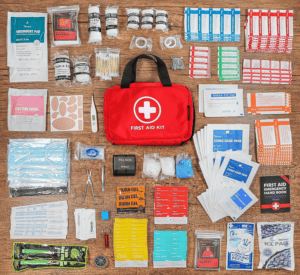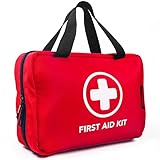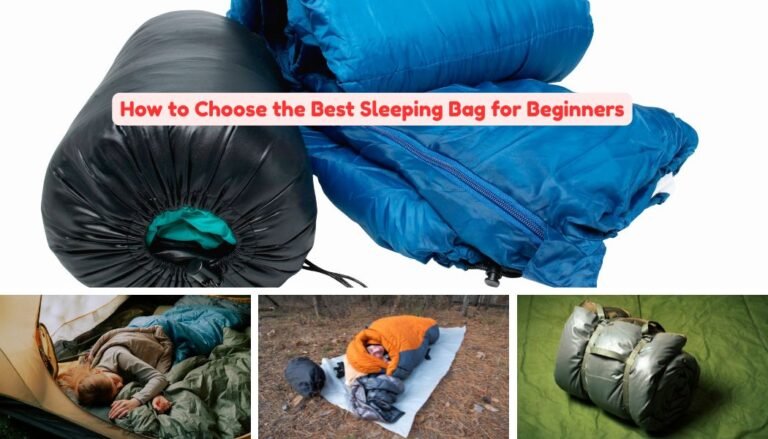Be Prepared for Anything
Wilderness First Aid Kits are essential in the great expanse of the wilderness, where nature’s serenity intertwines with its unpredictability; outdoor enthusiasts are often faced with the potential for emergencies. From minor scrapes to more severe injuries, the need for immediate medical attention can arise at any moment. This reality underscores the importance of being well-prepared with a comprehensive wilderness first aid kit. This article delves into the intricacies of wilderness first aid kits, highlighting their essential supplies and organizational strategies, ensuring that adventurers can handle emergencies confidently.

Understanding Wilderness First Aid Kits
Wilderness first aid kits serve as portable lifelines, providing the necessary tools and supplies to address a range of injuries and medical conditions encountered in remote outdoor settings. Unlike conventional first aid kits, wilderness versions are tailored to the unique challenges of outdoor environments, where access to medical facilities could be limited or non-existent. They are designed to be lightweight, compact, and versatile, allowing adventurers to carry them comfortably on hiking trails, camping trips, or expeditions into the backcountry. You can build your wilderness first aid kit or purchase one and add to it.
Essential Equipment for Wilderness First Aid Kits
Bandages and Dressings
Bandages and dressings form the bedrock of wound care within wilderness first aid kits, serving as the primary means to manage injuries ranging from minor cuts to more severe lacerations. These essential supplies are indispensable in providing hemostasis, protecting wounds from contamination, and promoting optimal healing outcomes.

Adhesive Bandages
Adhesive bandages, commonly known as “band-aids,” are perhaps the most recognizable first aid kit component. They are designed to cover minor cuts, scrapes, and abrasions, providing a protective barrier against dirt, debris, and bacteria. Adhesive bandages come in various shapes and sizes, allowing for versatility in addressing different wound types and locations on the body. Their adhesive backing ensures secure placement over the wound site, facilitating uninterrupted healing while minimizing the risk of infection.
Sterile Gauze Pads
Sterile gauze pads are essential for managing more significant wounds that require more extensive coverage and absorption of exudate. These non-adherent dressings are crafted from soft, woven materials that are gentle on the injury, minimizing the risk of trauma during application and removal. Sterile gauze pads are highly absorbent, effectively wicking away moisture and blood from the wound surface to maintain a clean and conducive environment for healing. Their sterile nature ensures they can be safely used without introducing harmful pathogens into the wound site, reducing the risk of infection and promoting optimal wound healing outcomes.
Elastic Bandages
Elastic bandages, also known as compression bandages, serve a dual purpose in wilderness first aid kits: they provide compression to control bleeding and support injured limbs or joints. These stretchable bandages conform snugly to the body’s contours, exerting gentle pressure to reduce swelling and minimize the risk of hematoma formation. Elastic bandages are particularly useful for immobilizing sprained joints or securing dressings in place over irregular or mobile body surfaces. Their versatility makes them indispensable for managing various injuries encountered in outdoor environments, from minor strains to more severe sprains or contusions.
Triangular Bandages
Triangular bandages are versatile multi-purpose tools that can be used for various first aid applications, including creating slings, immobilizing fractures, and securing dressings in place. Their triangular shape allows easy customization to fit different body parts and injury types, making them invaluable in wilderness environments where improvisation is often required.

Steri-Strips
Steri-Strips, also known as adhesive skin closures, offer an alternative to traditional sutures for closing minor lacerations and incisions. These thin, adhesive strips are applied across the edges of a wound to approximate the skin, promoting primary intention healing while minimizing scarring. Steri-Strips are lightweight, compact, and easy to apply, making them ideal for use in wilderness first aid scenarios where access to medical facilities may be limited. Their non-invasive nature reduces the risk of infection and accelerates wound closure, allowing for expedited return to outdoor activities without compromising healing outcomes.
Antiseptics and Cleansers
In the wilderness, where access to sterile environments is limited, and exposure to potential contaminants is heightened, antiseptics and cleansers are crucial in preventing infection and promoting optimal wound healing. These essential supplies serve as the first line of defense against microbial pathogens, ensuring that wounds are thoroughly cleansed and disinfected to minimize the risk of complications.
Silver Oxide
Silver oxide represents a promising tool for promoting blood clotting and wound healing in wilderness first aid scenarios. Its antimicrobial properties, hemostatic effects, and wound-healing acceleration make it valuable for managing injuries and promoting patient safety in remote outdoor settings. By incorporating silver oxide preparations into wilderness first aid kits and familiarizing themselves with their proper use, adventurers can enhance their ability to respond effectively to medical emergencies and ensure their well-being and that of others in the wilderness.
Alcohol Wipes
Alcohol wipes are convenient, single-use disposable wipes saturated with isopropyl alcohol. They are ideal for disinfecting minor wounds and skin surfaces without soap and water. Their antiseptic properties help kill bacteria and other microorganisms on contact, making them an essential component of wilderness first aid kits for sanitizing skin before wound care procedures.
Iodine Solution
Iodine solution, such as povidone-iodine or Betadine, is a broad-spectrum antiseptic agent commonly used for wound irrigation and disinfection in wilderness first aid. It effectively kills bacteria, viruses, and fungi, making it suitable for treating various injuries and preventing infection. Iodine solution is typically diluted with clean water before use to reduce its cytotoxic effects on healthy tissues while maintaining its antimicrobial efficacy.
Antiseptic Sprays
Antiseptic sprays provide a convenient and mess-free method for disinfecting wounds and abrasions in outdoor settings. They typically contain active ingredients such as benzalkonium chloride or chlorhexidine gluconate, which exhibit broad-spectrum antimicrobial activity against bacteria, viruses, and fungi. Antiseptic sprays are easy to apply and can penetrate hard-to-reach areas, ensuring thorough coverage and disinfection of wounds without the need for direct contact.
Antibacterial Soap
While traditional soap and water may not always be readily available in the wilderness, packing antibacterial soap in your first aid kit can help maintain proper hygiene and reduce the risk of infection. Antibacterial soaps contain active ingredients such as triclosan or chlorhexidine, effectively killing germs and bacteria on the skin’s surface and minimizing the likelihood of wound contamination during cleaning and dressing changes.
Saline Solution
Saline solution, also known as sterile saline or normal saline, is a mild yet effective wound irrigation solution commonly used in wilderness first aid. Its isotonic composition resembles bodily fluids, making it gentle on tissues while effectively flushing out debris, dirt, and contaminants from wounds. Saline solution is essential for irrigating and cleansing wounds before dressing or performing wound care procedures, promoting optimal healing outcomes.
Hydrogen Peroxide
Hydrogen peroxide is a potent antiseptic agent commonly found in household first aid kits, but its use in wilderness settings requires caution due to its cytotoxic effects on healthy tissues. While it can effectively kill bacteria and promote wound healing when used appropriately, hydrogen peroxide may also cause tissue damage and delay wound healing if applied in high concentrations or for prolonged periods. Therefore, diluting hydrogen peroxide with sterile water before use is recommended to limit its use to initial wound cleaning rather than repeated applications.
Medications
In the wilderness, first aid and medications are crucial in providing symptomatic relief and managing minor ailments encountered during outdoor adventures. While wilderness first aid kits are not intended to replace professional medical care, they are equipped with various medications to address common symptoms and alleviate discomfort until definitive treatment can be sought.
Pain Relievers
Pain relievers like ibuprofen (Advil, Motrin) or acetaminophen (Tylenol) are staples in wilderness first aid kits. They offer relief from various types of pain, including headaches, muscle aches, and minor injuries. These medications enhance comfort and mobility by reducing pain and inflammation, allowing adventurers to continue their outdoor pursuits with minimal disruption.
Antihistamines
Allergic reactions to insect stings, plant exposures, or environmental allergens can pose significant risks in wilderness settings. Antihistamines such as diphenhydramine (Benadryl) or cetirizine (Zyrtec) are included in wilderness first aid kits to counteract allergic symptoms such as itching, swelling, and hives. By blocking the effects of histamine, these medications provide rapid relief from allergic reactions, allowing individuals to manage allergic emergencies effectively.
Antidiarrheal Medications
Gastrointestinal illnesses such as traveler’s diarrhea can quickly derail outdoor adventures, causing discomfort and dehydration. Antidiarrheal medications such as loperamide (Imodium) are essential additions to wilderness first aid kits. They offer symptomatic relief from diarrhea and reduce the frequency of bowel movements. Additionally, these medications help prevent dehydration by slowing intestinal motility and fluid loss, enabling individuals to stay hydrated and maintain their energy levels during outdoor activities.
Antiemetics
Nausea and vomiting can occur due to various factors in wilderness environments, including motion sickness, altitude sickness, or gastrointestinal infections. Antiemetic medications such as dimenhydrinate (Dramamine) or meclizine (Bonine) are included in wilderness first aid kits to alleviate nausea and vomiting, allowing individuals to manage their discomfort and prevent dehydration. By blocking the signals that trigger nausea and vomiting in the brain, these medications help restore comfort and well-being, enabling adventurers to continue their outdoor pursuits without interruption.
Topical Analgesics
In addition to oral medications, topical analgesics such as lidocaine or benzocaine are valuable assets in wilderness first aid kits for managing localized pain and discomfort. These numbing agents temporarily relieve minor burns, insect bites, or skin irritations, soothing affected areas and reducing discomfort while promoting healing. By numbing nerve endings and dulling pain sensations, topical analgesics offer immediate relief and comfort in wilderness environments where access to medical facilities may be limited.
Anti-inflammatory Medications
njuries such as sprains, strains, or overuse injuries can lead to inflammation and swelling, compromising mobility and comfort in wilderness settings. Anti-inflammatory medications such as naproxen (Aleve) or aspirin are included in wilderness first aid kits to reduce inflammation, alleviate pain, and promote recovery from musculoskeletal injuries. By inhibiting the production of prostaglandins, these medications mitigate pain and swelling, allowing individuals to manage their injuries effectively and resume their outdoor activities with minimal discomfort.
Other Specialty Medications
Depending on individual medical needs and outdoor activities, wilderness first aid kits may contain additional specialty medications such as asthma inhalers, epinephrine auto-injectors for severe allergic reactions (anaphylaxis), or medicines for pre-existing medical conditions such as diabetes or heart disease. These medications are tailored to specific medical requirements and ensure that individuals can manage their health effectively in remote outdoor settings, minimizing the risk of medical emergencies and enhancing safety during wilderness adventures.
By incorporating diverse medications into wilderness first aid kits, adventurers can address various medical conditions and emergencies encountered in the wilderness, ensuring their well-being and safety during outdoor pursuits. However, it is essential to use medications judiciously and per established guidelines, seek professional medical care when necessary, and adhere to recommended dosages and precautions to prevent adverse effects.

Tools and Instruments
Having the right tools and instruments can significantly improve emergency response in the dynamic and unpredictable wilderness environment. Wilderness first aid kits have various tools and instruments to facilitate medical interventions, improvisation, and patient care in remote outdoor settings.
Tweezers
Tweezers are indispensable tools for removing splinters, debris, or embedded objects from wounds in wilderness environments. With their fine tips and precise grip, tweezers enable caregivers to extract foreign bodies safely and efficiently, reducing the risk of infection and promoting wound healing. Additionally, tweezers can be used for tasks such as tick removal, providing essential assistance in managing insect-related emergencies.
Scissors
Scissors are versatile tools with multiple applications in wilderness first aid, including cutting bandages, dressings, clothing, or medical tape. Compact, blunt-tipped scissors are preferred for safety reasons, minimizing the risk of accidental injuries during use. By enabling caregivers to tailor bandages and dressings to fit specific wound sizes and shapes, scissors facilitate optimal wound care and management in the field.
Safety Pins
Safety pins are simple yet invaluable tools for securing bandages, dressings, or improvised slings in wilderness first aid scenarios. Their robust construction and secure fastening mechanism make them ideal for temporary wound closure and stabilization, enabling caregivers to effectively immobilize injured limbs or secure improvised splints. Safety pins are lightweight and compact, making them convenient additions to wilderness first aid kits.
CPR Face Shield
CPR face shields provide essential protection for caregivers during cardiopulmonary resuscitation (CPR) efforts in wilderness emergencies. These disposable devices consist of a transparent barrier with a one-way valve, allowing for safe and hygienic mouth-to-mouth resuscitation while preventing direct contact with the patient’s respiratory secretions. CPR face shields are compact and lightweight, making them practical additions to wilderness first aid kits.
Penlight or Headlamp
Penlights or headlamps with a focused beam of light are essential for conducting medical assessments and examinations in low-light or nighttime conditions. They enable caregivers to inspect wounds, assess pupils, and perform other medical procedures with precision and accuracy, enhancing patient care and safety in wilderness emergencies. Penlights and headlamps are lightweight, portable, and energy-efficient, making them practical additions to wilderness first aid kits.

Personal Protection
Safeguarding one’s health is as essential as aiding others in the wilderness. Personal protection items, such as gloves and face masks, mitigate the risk of cross-contamination and infectious disease transmission during first aid interventions. Nitrile gloves offer superior tactile sensitivity and barrier protection, while disposable face masks provide respiratory protection in environments where airborne pathogens may pose a threat. By prioritizing personal protection, adventurers can uphold the principles of safety and infection control in wilderness first aid scenarios.
Adventurers can enhance their ability to respond effectively to medical emergencies and ensure their safety and well-being in remote outdoor settings by including a comprehensive selection of tools and instruments in wilderness first aid kits. However, it is essential to familiarize oneself with the proper use and application of these tools and instruments through training and practice, ensuring optimal utilization in wilderness first aid scenarios. Take a first aid course.
Organizing Your Wilderness First Aid Kit
Practical organization is essential to maximize the utility of a wilderness first aid kit and streamline emergency response efforts. Categorizing supplies into distinct compartments or pouches enables rapid access to needed items, minimizing the time required to initiate treatment. Additionally, regularly reviewing and restocking the kit ensures that expired medications are replaced and consumable supplies are replenished, maintaining its readiness for future outdoor adventures.
Safeguarding Safety in the Wild
In the vast tapestry of nature’s grandeur, the specter of medical emergencies looms as a reminder of its inherent risks. Yet, with the proper preparation and equipment, adventurers can navigate these challenges with resilience and confidence. Wilderness first aid kits stand as stalwart companions, imbued with the essential supplies and tools to confront adversity head-on. By understanding their components, organizing them effectively, and embracing safety principles, outdoor enthusiasts can embark on their journeys with the assurance that they can handle whatever the wilderness may present. Taking a first aid course is always a good idea.
- WHAT YOU GET ▶ Everything you need is in this kit! Fully packed with 330 professional medical…
- WATERPROOF & DURABLE BAG ▶ Made of high-quality waterproof thickened nylon fabric to better…
- SMART AREA CLASSIFICATION DESIGN: 4 transparent storage areas and 2 specific storage areas for gauze…
FAQ Section
How often should I check and restock my wilderness first aid kit?
It is recommended to perform a thorough inventory check of your wilderness first aid kit at least twice a year, preferably before embarking on any outdoor excursion. Additionally, inspect the contents for signs of damage or expiration.
Can I customize my wilderness first aid kit based on my specific outdoor activities?
Absolutely! Tailoring your wilderness first aid kit to suit the demands of your chosen activities can enhance its effectiveness and relevance. For example, if you frequently engage in water-based pursuits like kayaking or rafting, waterproof packaging and additional flotation devices may be prudent additions to your kit.
Are wilderness first aid courses necessary for using a wilderness first aid kit effectively?
While not mandatory, completing a wilderness first aid course can significantly enhance your proficiency in using a wilderness first aid kit and responding to emergencies in remote outdoor settings.
Can I substitute items in my wilderness first aid kit with household alternatives?
While improvisation may be necessary in certain circumstances, it is generally advisable to refrain from substituting specialized medical supplies in your wilderness first aid kit with household alternatives. Commercially available products are designed and formulated for medical use, ensuring their efficacy and safety in emergencies.
Disclaimer: This blog post contains affiliate links





